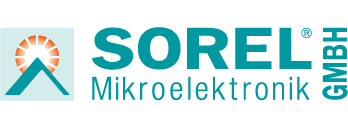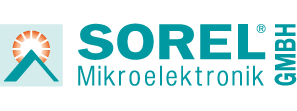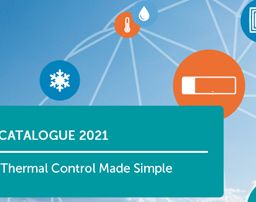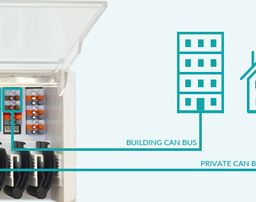The Control of District Heating Transfer Stations
Lesezeit: 9 Min


The latter applies, for example, to the direct use of heat from deep geothermal energy and the integration of waste heat from data centers or industry. Various renewable heat sources and technologies such as solar thermal energy, biomass, heat from waste water and large heat pumps can be combined into heating networks in order to replace fossil-fuel heating plants.
A heating network consists of a central heating system, a distribution network and transfer stations in the connected buildings. The system generates heat, which is fed to the connected buildings via insulated underground pipes. Large storage tanks with a capacity of several thousand to millions of liters play a central role in district heating and local heating networks. As long-term storage tanks, they can secure the heat supply for several days, weeks and months.
The medium used to transport the heat is usually hot water, which is softened and often desalinated and transported over long distances at temperatures between 80° and 130°C and a pressure of around 13 bar. District heating is a closed heating circuit with flow and return, in which the cooled water is fed back to the supplier after the heat exchange.
Why district heating can play a key role in the heating transition
District heating is one of several important building blocks in the heating transition, as it enables an environmentally friendly and resource-saving heat supply and can therefore make a significant contribution to achieving climate targets.
The importance of district heating in this context lies in its efficiency, environmental friendliness and its role as an important source of heat for urban areas and conurbations. Here are some points that illustrate the importance of district heating for the heating transition:
|
|
|
|
|
|
How does the heat get into the house?
To connect to the district heating network, two holes must be drilled in the building envelope, i.e. the outer wall of the house, for the supply and return of the heat transfer medium. It must also be possible to create a connection to the nearest district heating pipe. These are usually located underground, but in rare cases an above-ground route is also possible.
Once the heat has arrived at its destination, it must be distributed in the building in such a way that each consumer receives the right amount of heat. In addition, the transferred heat is measured and the pressure and flow rate of the district heating water is controlled in the district heating transfer station. The return temperature of the heating water is also regulated, which indirectly controls the heat output of the heating system. It must also be possible to interrupt the water flow in an emergency.

Functions of a district heating transfer station at a glance:
|
|
|
|
|
|
|
District heating transfer controller
A district heating transfer controller regulates the transfer of heat energy from a heat supplier to end consumers in district heating networks. From the network operator’s point of view, the main focus on the primary side of the heat exchanger is the precise measurement of the heat quantity and flow control. Compliance with a specified maximum return temperature or contractual output is important here.
For the heating customer on the secondary side, the focus is on weather-compensated control of one or more mixed heating circuits, as well as efficient control of domestic hot water heating, which can take place in various ways based on flow, storage or as a storage charging system.

In summary, the requirements can be broken down into the following seven key points:
1. Measurement of the heat quantity
The precise measurement of thermal energy and counting of the heat quantity is carried out in transfer stations predominantly with the aid of external, calibrated heat meters. These continuously measure and evaluate the primary flow and return temperatures as well as the flow rate.
The data obtained is stored in a secure long-term data memory and can be read out on site using an optical interface. Alternatively, they can be transmitted via M-Bus, a standardized system for reading energy and consumption meters, in conjunction with a gateway for remote reading. Mechanical flow sensors such as vortex sensors VFS and VVX or turbine sensors VTY have been widely used and proven to date. A particularly durable and dirt-resistant alternative is a new generation of ultrasonic flow sensors which, with a heat transfer medium temperature of up to 130 °C, are particularly suitable for district heating applications.
2. Billing and tariffing
District heating transfer controllers usually do not have the full range of functions and evaluations of external heat meters, but are also equipped with M-Bus or Modbus RTU interfaces for device communication. They are therefore able to read and display the data from the heat meters via the M-Bus and communicate with a building management system or a heating network operator via an additional Ethernet interface using Modbus TCP, for example.
3. Reduction of the return temperature on the heating network side
Cooling the heating medium as much as possible at the heat demand points, such as heating circuits or domestic hot water heating systems, enables modern heat sources to work effectively. This applies equally to heat distribution. The more the water is cooled down by the heat demand points, the less circulating water is required to transfer a certain energy output. In addition, a low temperature difference significantly reduces distribution losses. The efficiency of district heating networks can therefore be increased enormously by lowering the heating water return temperature.
For the reasons described above, district heating suppliers stipulate a maximum permissible return temperature in the technical connection conditions, which, if exceeded, can result in additional charges.
| |||||
| Consumer | System return temperature θRNmax primary | Outdoor temperature θa | |||
| Heating systems direct operation |
| -10 °C | |||
| Heating systems indirect operation |
| -10 °C | |||
| Ventilation systems |
| -10 °C |
Table: Technical connection conditions for hot and warm water district heating networks using the example of Stadtwerke Kiel, Germany
To prevent the maximum permissible return temperatures in the primary circuit from being exceeded, the district heating transfer controller throttles the flow rate if the set limit value is exceeded using a 2-way control valve V1 with motor drive (0 – 10V) until the permissible return temperature is maintained again.
The only dilemma is that it is sometimes not possible to comply with the requirements for drinking water hygiene and the operation of water heaters at the prescribed maximum return temperatures. For example, the technical specifications of a district heating network operator state: “It must be possible to maintain a temperature of ≥ 60 °C at the hot water outlet of the drinking water heater when operated as intended. The circulation system must be designed, constructed and operated in such a way that the water temperature in the entire system cannot fall below 55°C, thus ensuring that germs are killed off.”
In order to meet both requirements, the required maximum return temperatures are not maintained during the heating and reheating phase of the drinking water system due to hygiene requirements. So-called heat interface units are therefore being used more and more frequently, particularly in apartment buildings supplied by local or district heating. These ensure that the volume in the hot water supply pipes in the individual apartments is < 3 l and therefore circulation can be dispensed with. Improved drinking water hygiene and the achievement of lower return temperatures are the desired consequences.
4. Control of the heat supply (power limitation)
Based on the measured heat quantity, the district heating transfer controller regulates the supply of district heating to the end user’s heating system. This is done by opening or closing 2-way control valves to maintain the desired room temperature.
5. Control of the heating circuits and DHW heating

District heating transfer controllers usually have a defined number of predefined hydraulic diagrams, helping the district heating customer to make the best possible adaptation to their heating and hot water installation. These differ, for example, in the type and number of weather-controlled heating circuits (mixed and direct) or the principle of DHW heating (instantaneous water heater principle, buffer tank charging volume flow with speed-controlled heating medium circulation pump, two primary-side valves, etc.).
Manufacturers of district heating transfer stations must find suitable controller hardware for this, which provides inputs for temperature and flow sensors according to the application, as well as sufficient potential-bound and analog 0-10V/PWM outputs.
6. Protection functions
A district heating transfer controller can integrate safety functions to prevent and/or report problems such as overheating. If the temperature or pressure is outside the normal parameters, the controller can trigger alarms or stop the heat exchange.
Today, thermomechanical safety devices play an important role in district heating technology, but with the increasing integration of electronic sensors and software intelligence, there are signs of a surge in innovation for even more flexible and efficient safety functions.
7. Integration into the building management system (BMS)
Modern district heating transfer controllers can be integrated into a BMS system in order to control the energy consumption in a building or system more efficiently. Common interfaces for this are galvanically isolated RS-485 interfaces for Modbus RTU/device bus communication and Ethernet interfaces for Modbus TCP/IP communication.
Some options for controllers individually adapted to OEM district heating stations for the primary side and up to two weather-compensated, mixed heating circuits and a fresh water module on the customer side can be found here








